2023's Round up of the Best Capos For Guitar
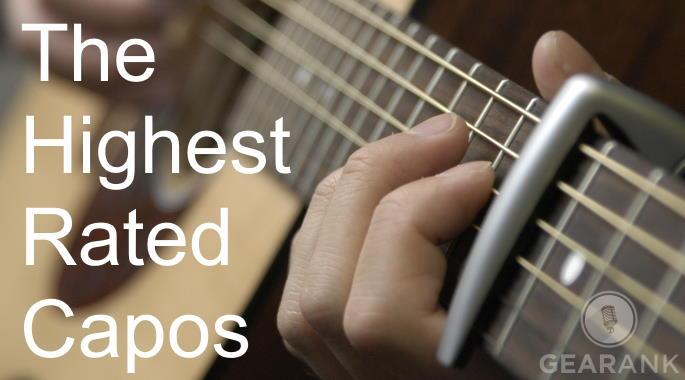
Author & Contributors
Alexander Briones
I have been writing about and researching music gear for many years, all while serving as a music director at my local church. I engage in guitar playing and singer-songwriter stints, in addition to mentoring young musicians and teaching guitar and bass.
Best 6 String Guitar Capos
Shubb C1 Standard
Cons
- No spring-loaded instant clamping
- A bit more complex to setup
Pros
- Adjustable clamp tension
- Compatible with most steel string guitars
- Good build quality
- Compact size
Shubb is an innovator because their capos were among the first c-clamp capos to approach the level of utility and ease of use found in a trigger-style capo.
The Standard series used to use a pointed piece of plastic to tighten the capo against the neck. They introduced the Deluxe at a later time and it used a wheeled mechanism. Because the wheel created such an improvement in performance, Shubb introduced the wheel mechanism into the Standard Series.
The Shubb C1 utilizes this screw and wheel mechanism to allow for quick clamping and fine tuning of clamping tension. Adjusting the tension allows you to reduce tuning problems from the strings being pressed down too hard.
This adjustability also allows the capo to better fit into necks of different shapes and sizes. And it does so without putting too much pressure on the neck, or on the capo mechanism itself. This flexibility extends the use that you can get from this capo.
A drawback of the design is that it often requires two hands to operate, which makes it inconvenient to move mid-set when compared to a trigger-style capo. Because of the design, the potential exists that if you’re not careful while using this capo you may scratch the finish of your guitar’s neck.
If you have guitars with different string action, fret height, or nut slot depth, then the Schubb C1 Capo is a great pick. Look elsewhere if you need a capo that you can put on and take off quickly.
Specifications
- Clamping Mechanism: Screw and Roller (proprietary design)
- Materials: Nickel-plated Brass, Proprietary foam padding
- Tension Adjustment: Screw
- Suitable for: 6-string Acoustic, Nylon String and Electric guitars
| Website | Source | *Rating Value |
| YouTube | Edwin-E | 95/100 |
Guitarx X3
Cons
- Not for guitars with tall/large frets
- No way to tweak clamp tension
Pros
- Simple trigger operation
- Quick spring-loaded clamping
- Good materials and build quality
- Not too bulky or distracting
Guitarx is a music accessory company founded in 2014, and the X3 is their most popular capo offering.
Made with Aluminum alloy with an external steel memory spring trigger clamping mechanism, it's as simple as it gets. There's really nothing unique when it comes to its function, so there's no complexity to bog you down.
The main advantage of its trigger mechanism capo is how quickly it clamps and de-clamps. This makes it ideal for those who need to do quick capo changes while performing. The clamping force is well suited for instruments with small frets, with enough pressure to prevent string buzz. This means that it works well with most acoustic and electric guitars.
Note that this is not compatible with guitars that have taller or larger frets, the spring-loaded mechanism clamps too hard on the strings, causing them to go sharp. This can also be an issue for those that use extra light gauge strings.
Unlike other trigger style capos that are too bulky and distracting, the X3 retains a compact and discrete profile. The aluminum alloy material used on the X3 gives it a premium and solid feel while retaining a lightweight profile.
If you're looking for a high quality trigger style capo for that's reasonably priced, then do check this one out.
Specifications
- Clamping Mechanism: Steel memory spring trigger
- Materials: Aircraft-grade aluminum alloy, silicone padding
- Tension Adjustment: none
- Suitable for: 6-string Acoustic Guitar
| Website | Source | *Rating Value |
| YouTube | ISTAND A | 92/100 |
Shubb S1 Deluxe
Cons
- No spring-loaded instant clamping
- A bit more complex to setup
Pros
- Adjustable clamping tension
- Compatible with most steel string guitars
- USA made
- Made from quality steel material
The S1 Deluxe utilizes similar design and function as the C1, only this one utilizes more durable materials and is made in America.
To ensure durability, this capo utilizes high quality steel as its core material, compared to nickel-plated brass found on Shubb's Standard series capos like the C1. And since its made in the US, production and quality is closely monitored by the company and it shows.
This capo combines a thumbscrew and a roller for tension adjustment, a very useful mechanism for fine tuning the capo's grip on the neck. Unlike trigger style capos that clamp hard on the frets, this one presses on the strings more efficiently, much like how you don't really press to hard on the strings when you do bar chords. This way, you get capo functionality without the usual intonation problems that can come with it.
The Deluxe S1 is part of Shubb's "Model 1" line of capos that are meant to fit most steel string acoustic and electric guitars. Thanks to its and unique design, there are no springs to wear out which makes this capo a good long-term investment. Note that the rubber sleeve will need replacing, but only after a lot of heavy use. Thankfully, this part is readily available from retailers or straight from Shubb.
The main downside to this design is similar to the Shubb C1, it does not allow quick one-handed capo changes. There are also noticeably more metal parts exposed, so it is also not a "loosen and slide around the neck" type of capo. It is not recommended for people who use various capo positions during a set.
If you want an adjustable capo that inspires confidence in long-term use and durability, then the Deluxe S1 is the pick for you.
Specifications
- Clamping Mechanism: Screw and Roller (proprietary design)
- Materials: Stainless Steel
- Tension Adjustment: Screw
- Suitable for: 6-string Acoustic, Nylon String and Electric guitars
| Website | Source | *Rating Value |
| Audiofanzine | moosers | 100/100 |
| YouTube | Acoustic Life | 100/100 |
D'Addario NS Tri-Action PW-CP-09
Cons
- Limited tension adjustment
Pros
- Trigger-style instant clamping
- Built-in tension adjustment
- Easy to use
- Has a nifty pick holder
The D’Addario NS Tri-Action is a trigger-style capo with built-in tension adjustment, allowing you to enjoy the convenience of one-hand clamping on the fretboard, while having the ability to adjust the tension to match the string height and gauge of your guitar.
Using this capo is as simple as grabbing the trigger portion to open the clamp and positioning it on the fretboard. Then simply turn the thumbscrew to make the necessary tension adjustments. This means that it is viable for those who need to instantly move the capo up and down the neck within songs.
Since it uses a spring, there's a physical limit to how much you can lower the tension, keep this in mind especially if you're planning on using this on guitars with tall frets. This limitation is a necessary compromise to achieve its convenient hybrid functionality. Note that you need to apply just the right amount of tension to prevent string buzz, without pressing the strings too much which may cause intonation issues.
To avoid losing it when not in use, this capo can clamp on the headstock, but this is not recommended as it may damage your guitar. While it functions like a regular trigger-capo, the spring is positioned differently, hence the reverse trigger feel, which may feel odd at first.
And it has a nifty pick holder built-in, for even more convenience.
The D'Addario NS Tri-Action Capo gives you the best of both worlds, so to speak.
Specifications
- Clamping Mechanism: Clamp with Micrometer Tension Adjustment
- Materials: Aircraft-Grade Aluminum
- Tension Adjustment: Screw
- Suitable for: 6-string Acoustic, Nylon String and Electric guitars
| Website | Source | *Rating Value |
| YouTube | rusty guitar | 94/100 |
Shubb C1N Standard
Cons
- No spring-loaded instant clamping - unsuitable for constant changes
- Fewer rubber contacts
Pros
- Adjustable clamp tension
- Balanced pressure on strings
- Premium build quality and feel
- Compact size
The Shubb C1N impressed me at the get go with its adjustable clamping tension. It gave me good and consistent intonation, substantially better than the spring-loaded trigger style capos that I've been using.
Adjusting clamping tension is done via a thumbscrew, it lets me dial in just the right amount of pressure on the strings. As you tighten the screw, it pushes a roller mechanism upwards, which in turn gradually tightens the capo's grip on the neck. The screw does not actually secure the capo on the neck, rather, the capo is locked in place via the bottom part of the clamp through a well implemented roller mechanism. With this, I can avoid intonation issues due to excessive pressure on the strings, and I don't have to loosen the screw to move the capo up and down the neck.
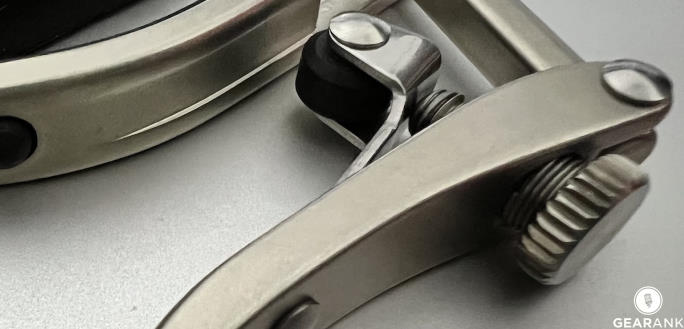
While this design makes it easier to clamp and de-clamp, you still have to make minor adjustments as you move the capo further up or down the neck. This means that it's not a good choice for those who need to move the capo instantly while performing songs.
Tension variability also makes this capo compatible with different neck profiles, which is a big deal for me, given that I have guitars with varying neck shapes. I've used it on all of my main guitars and I'm pleased with the results, this includes a Strat, a Les Paul, a Martin OM and a Parlor. I've also tested it on a super strat with thinner neck and it works just as well.
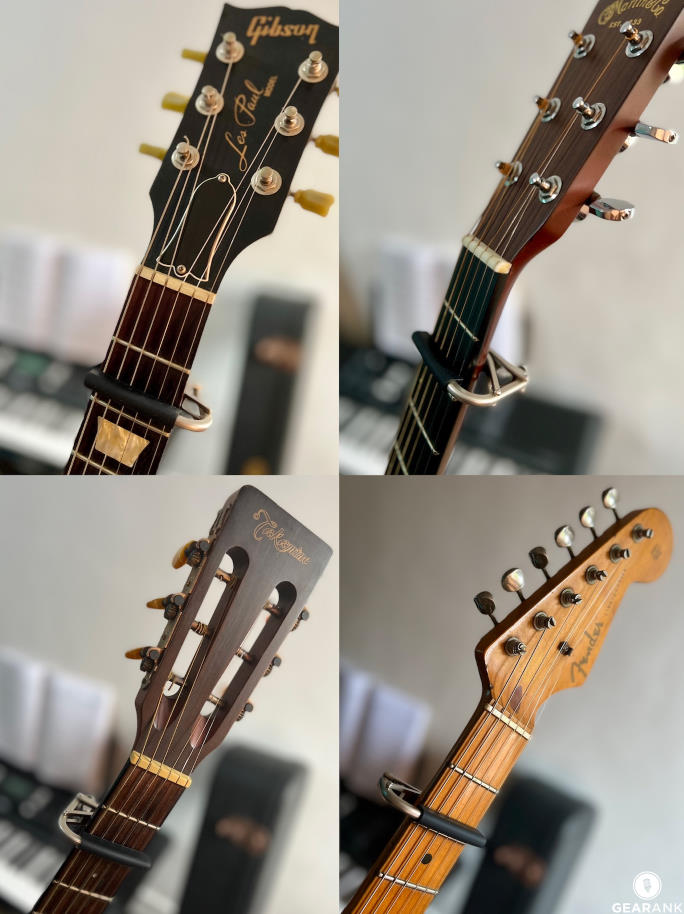
Another important advantage that this mechanism has is even pressure application on the strings, in a way that does not pull the string sideways. This is a common problem I encounter when using trigger style capos, with the Shubb C1N's mechanism, this has become a non-issue.
I am a bit concerned about its limited rubber contact points, which results in more exposed solid parts that could accidentally hit my guitar. But this may be a design choice, to better manage the weight and size of the capo.
All in all, the Shubb C1 gets my thumbs up. I highly recommend it, especially for those who have sensitive ears and want a capo that doesn't cause intonation issues.
Specifications
- Clamping Mechanism: Screw and Roller (proprietary design)
- Materials: Nickel-plated Brass, Proprietary rubber foam padding
- Tension Adjustment: Screw
- Suitable for: 6-string Acoustic and Electric guitars
| Website | Source | *Rating Value |
| Gearank | Alexander Briones | 97/100 | YouTube | The Creative Guitarist | 96/100 |
Best 12 String Guitar Capo
The only difference between a 6 and 12-string capo is that a 12-string capo applies tension across a wider surface area and applies more force. While you can use a 6-string capo on a 12-string instrument, it probably won’t have enough tension to allow the strings to ring out. Some 12-string capos produce too much force for a 6-string instrument, causing the strings to go out of tune.
Kyser 12-String Guitar Capo - Black
Cons
- Crude tension adjustment
- Quite bulky
Pros
- High tension design for 12-string guitars
- Quick spring-loaded clamping
- Good build quality
- Bendable bottom clamp for tweaking tension
Kyser capos are ubiquitous for their quality, affordability and how easy they are to find. This particular model is designed specifically to handle the size and tension requirements of 12-string guitars.
It does the gripping via the familiar and easy to use trigger style spring-loaded design. You simply pull on the trigger to declamp and move the capo around, and release to clamp on your preferred fret. This makes it is as easy to use, as it is accessible.
Speaking of grip, 12-string guitars require more clamping pressure because of the extra strings, and this is properly accounted in the design of the Kyser 12. Be warned that this stronger clamping tension will dig in harder on 6-string guitars.
The main drawback to this design is that like other trigger capos, there is no "easy way" to adjust the tension. Interestingly, Kyser capos are actually tension adjustable, you can tighten or loosen its grip by forcibly bending the lower clamp. It's a crude method but it does work, especially when you limit the capo to a specific guitar and fret position. But if you're planning to use it on different guitars and on different frets, having to constantly bend the lower clamp is simply too bothersome and impractical.
I also take some issue with how distracting and bulky it looks when clamped on a guitar. But seeing exactly where the capo is can be a good thing for those who use a Capo Chart.
Still, if you have a 12-string in your collection and you want a quick release capo for it, then the Kyser 12-string capo is an easy decision.
Specifications
- Clamping Mechanism: Torsion spring trigger
- Materials: Aluminum
- Tension Adjustment: none
- Suitable for: 12-string Acoustic or Electric guitars
If you don't believe that this trigger-style capo has adjustable tension, then I'll leave it up to Kyser to demonstrate it for you:
Things to Consider Before You Buy A Capo
To find the best guitar capo for your instrument, there are a few things you will need to know. The sections below outline some key things to keep in mind before you make a purchase.
The Types of Capos
There are three main types of capos you will run across: trigger/spring-loaded, C-Clamp/variable tension, and partial. Each type of capo has its pros and cons, so it’s important to know the difference between them before you commit to buying anything.
-
Trigger / Spring-Loaded
Trigger capos are the most popular type of capo. You open the capo by squeezing the trigger portion (which compresses the spring), and then when you release the trigger, the spring extends and maintains the capo’s tension.
These capos are easy to use because all you have to do is squeeze the trigger mechanism to remove and place it. Because they’re so simple, they’re arguably the best capo for beginners. However, unlike C-Clamp capos you can’t adjust the tension. If the capo is too tight, it will make your guitar sound out of tune, and if it’s too loose, it will make your strings buzz.
-
C-Clamp / Variable Tension
With C-Clamp / Variable Tension capos you manually adjust the tension by turning a thumbscrew. The cool thing about these capos is that you can adjust the tension for your instrument, so you won’t have to re-tune when you use it (again, this depends on the guitar). These capos have a quick-release mechanism to release the capo from the neck, though they’re still harder to put on/take off than a trigger capo. A good example of this capo would models by Shubb.
Another benefit of this type is that it’s easy to use with a nylon string or electric guitar because you can dial in a tension appropriate for the strings you’re using. Most trigger-style capos are designed for acoustic guitar, so they may exert too much pressure for nylon or (most) electric strings..
-
Partial
Partial capos only cover some strings on an instrument. They’re commonly used by finger-style guitarists to change the notes they can play in the bassline of a piece. These capos aren’t as practical as the other two options, but they’re a good addition to your collection of gear if you’re a finger-style musician.



Which is the best Capo for my Instrument?
-
Best Capo for Acoustic Guitar
Most capos are designed with steel string acoustic guitars in mind so you won't have to worry much about compatibility. Do note that your guitar's setup and action may affect the way the capo interacts with the tuning. Look for a capo that has softer padding or a tension adjuster.
-
Best Capo for Electric Guitar
Electric guitars make use of thinner gauges of string and lower action. This makes capos with tighter springs problematic since the thinner strings will get sharp in pitch. Opt to choose capos that have lighter springs. Tension-adjustable capos can also be used but might be too inconvenient for live use to put on and remove.
-
Best Capo for Classical Guitar
Classical guitars have lower string tension and wider fretboards than steel string acoustic guitars. Some capos may not fit the width of the fretboard or exert the right amount of pressure. Some manufacturers offer models specifically for classical guitars so if you find a model of capo you like from our list, you might want to check if the manufacturer also offers a classical guitar alternative.
-
Best Capo for Ukulele
Ukuleles usually don't have any problems with tuning and tension since their frets are small. Some capo designs have the foam at a specific angle so they might overshoot the strings when positioned incorrectly. This guide has a "Features" section for each capo we've recommended where we indicate whether the product is compatible with ukuleles, so do take note of this when selecting the one to buy.
-
Best Capo for 12 String Guitar
12-string guitars have wider fretboards and since the strings are doubled up, they require more tension to clamp down on the strings. There are capos specific to 12-string but capos with enough width and tension may also be used. Do take note of which ones in our guide are said to exert more pressure - it may be a con for some instruments, but is usually much better when used on 12-string guitars.
Mason Hoberg's Opinion on Buying an Expensive Capo
This is just a personal opinion so take it as you will, but I don’t think you don’t need to drop a lot of cash to get a good capo. You can get a perfectly functional capo for under $20. When you buy an expensive capo, you’re generally paying for tone retention and a moderate reduction in tuning issues. Capos have a tendency to somewhat reduce the tone of a guitar because they dampen the vibration of strings. However, the difference between a high-end capo and an entry-level one isn’t dramatic enough to justify the increased cost for most beginning musicians.
Best Capo Selection Methodology
The first edition was published in 2017.
After examining all the widely available and popular capos available at major American music gear stores, we put the most promising 25 models on our short-list for closer examination - you can see most of them in the Music Gear Database. We then gathered relevant reviews, ratings, videos, and forum comments that discuss them, including the most recent ones. This also entailed the gathering of 71,100 sources, a 27.7% increase over the previous edition. All these data were then processed via the Gearank Algorithm to produce our rating scores out of 100 which we used to select the highest-rated ones to recommend above. For more information about our methods see How Gearank Works.
About the Author and Contributors
Here are the key people and sources involved in this guide's production - click on linked names for information about their music industry backgrounds.
Lead Author & Researcher
Alexander Briones
I have been writing about and researching music gear for many years, all while serving as a music director at my local church. I engage in guitar playing and singer-songwriter stints, in addition to mentoring young musicians and teaching guitar and bass.
I'm a long time user of trigger style capos, mostly because they are affordable and widely available. I find them quick and easy to use, and I've gotten used to tuning my guitar to compensate for any intonation problems. But after experiencing the adjustability of Shubb capos, I don't think I'll be going back to trigger style capos anytime soon.
Contributors
Mason Hoberg: Supplemental writing.
Raphael Pulgar: Supplemental writing.
Jason Horton: Editing and Illustrating.
Media
Main/Top Image: Original photograph by James Kim, modified by Gearank.com, and both the original and modified versions are available for anyone to copy and modify under the terms of the Creative Commons CC BY-SA 2.0 license.
The individual product images were sourced from websites, promotional materials or supporting documentation provided by their respective manufacturers, except for the C1N Roller and Screw and C1N on 4 Guitars which were photographed by the author.
The video has been embedded in accordance with YouTube's Terms of Service.



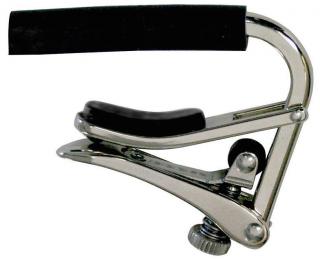
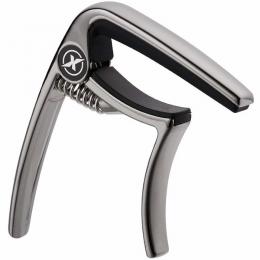
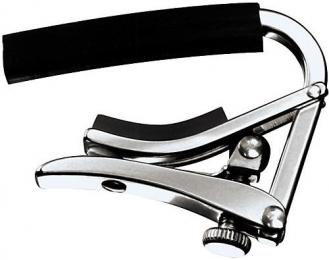
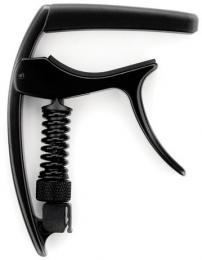
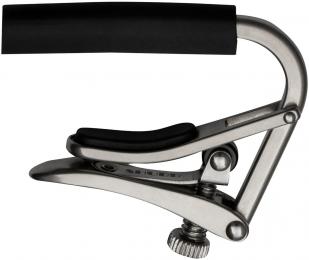
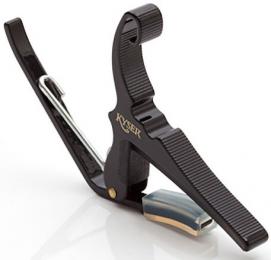
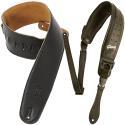

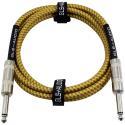

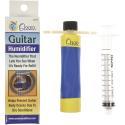
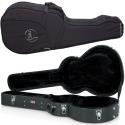
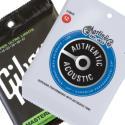
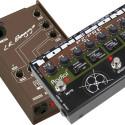
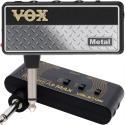
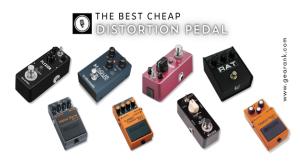
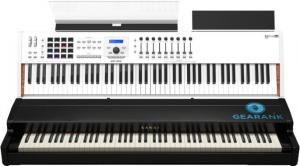
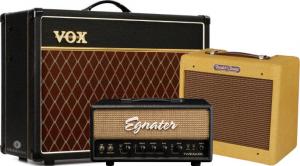
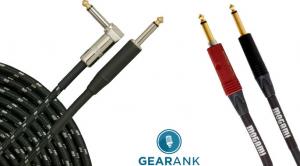
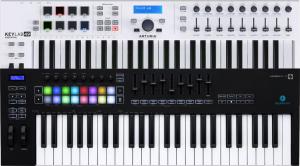
Comments
Publication of our August
Submitted by Jason Horton on
Publication of our August 2022 Edition resulted in the following capos coming off the recommended list above:
Your article looks good but
Submitted by Billy White (not verified) on
Your article looks good but it doesn't show specific capo's (or their sizes) for ukuleles. They are all guitar capos that can be used on ukuleles. The main problem is that guitar capos are nearly always too big for ukuleles therefore don't sit or fit right. I have 2 questions - 1) Are there any specific ukulele capos? and 1) Will the Wingo JX-09 fit a small ukulele / what size is it?
I've found a cheap PLASTIC
Submitted by DaveEff (not verified) on
I've found a cheap PLASTIC guitar capo best for my uke as it weighs so little. Metal capos make your guitar a little neck heavy and your Uke very neck heavy! A plastic spring capo is great.
For ukulele players, this is
Submitted by Mark (not verified) on
For ukulele players, this is just a clickbait waste of time. You should be embarrassed that you can’t be bothered to look at ukulele capos, but you can add ukulele words to the page to try and confuse people into reading this unhelpful review page. I won’t be back here again.
There are many capos that are
Submitted by Jason Horton on
There are many capos that are designed to be used with both guitars and ukuleles and we have recommended the WinGo JX-09 above which most definitely can be used with ukes.
Our September 2020 update
Submitted by Jason Horton on
Our September 2020 update resulted in the following capos coming off the recommended list above, but you can still read our analysis of them:
As a result of the September
Submitted by Jason Horton on
As a result of the September 2019 update to this guide the following capos came off the recommended list above, but you can still see our analysis of them:
Hey, you guys missed the best
Submitted by Jim Tull (not verified) on
Hey, you guys missed the best capo made: the Phil Elliott Elite. Nothing comes close to its compactness, workmanship and ability to hug the fret.
We didn't miss Elliott Capos,
Submitted by Jason Horton on
We didn't miss Elliott Capos, they didn't meet our availability criteria as listed in the Methodology section above.
For the most part, we don't include boutique brands in our guides, however we'll take your suggestion on-board and we may expand the eligibility criteria when we next revise this category.
I got the G7th, but the
Submitted by Ross (not verified) on
I got the G7th, but the Newport model a few months back and it works great - can't speak to the Performance 2. Using on a Yamaha acoustic.